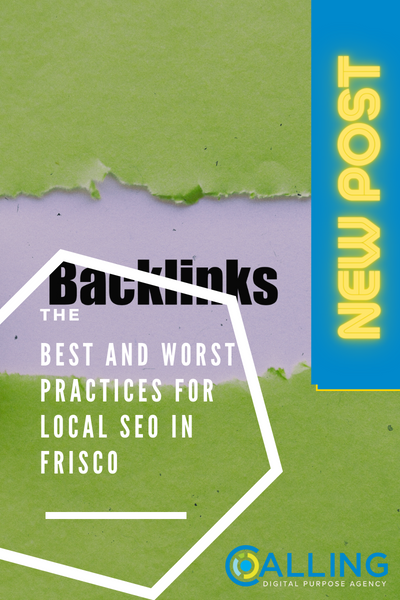How to Build Your Site's SEO Rank Through Backlinks
Even in online spaces, building connections is an essential part of establishing your brand’s visibility. While making your own website is the first step to expanding your reach, proper backlinks are the leap you need to develop your company’s online presence further.
Since online visibility is a continuous race to reach the #1 ranking on search engines, it’s vital to optimize all the elements in your website for better SEO ranks. One standard practice you should develop is to implement backlinks to your landing pages properly.
Why do websites need backlinks?
Similar to how your business needs to build relationships with other companies, your website must also make literal connections to other sites. Injecting backlinks to your site is a standard Search Engine Optimization (SEO) strategy to improve your organic rankings. These backlinks reinforce the authority of a page, ensuring that it’s not an orphan page that doesn’t belong anywhere internally and externally on the site. For this reason, sites with plenty of backlinks are usually at the top of Google’s SERP ranks. This is primarily why Wikipedia pages on different topics are almost always the top search result.
Inserting backlinks to your website isn’t as simple as it sounds. Like how keyword research needs to be precise and accurate, you must cautiously implement the right strategies. Otherwise, your site can suffer from lower rankings due to improper implementation of SEO.
In this article, we’ll share a five-step guide on the proper way of implementing backlinks to your landing pages.
Step #1: Go back to your keyword research
A strong backlinking strategy must also consider the value of keyword research. If your site is already optimized with proper keyword placement, you’ll generally have a better time following this step. Otherwise, you might need to go back to the drawing board.
Remember that good keyword research always considers the preferences of your target demographic. Look for key terms that your prospective customer could look for online. This can be answers to questions, names of services, or terms in your industry. Use this compiled list of keywords as the basis of your topics. Afterward, create keyword content that can utilize strong internal and external backlinks to reinforce its credibility.
Step #2: Learn from your competitors
The stiff competition in today’s different entrepreneurship makes it an exciting and challenging time to have your own business. This is primarily because it has become much easier to create a business model from scratch, unlike in previous generations. Unfortunately, this makes the market dense with competition, causing businesses to be more competitive than ever.
Although it’s essential to focus on your own progression and success, you must also consider your competition. You can learn a lot from other establishments in your industry, whether from companies on the same playing field as yours or industry giants beyond your reach. Look at their business strategies and, more importantly, their keyword usage to see if you’ll opt to compete with them or settle for another niche market. This allows you to gauge if it’s better to go head-to-head against others or to find an untouched demographic where you’ll have less competition.
Step #3: Apply your research by optimizing your pages
Injecting backlinks to your pages won’t be as effective if your website is underperforming in other technical aspects. Poorly optimized pages will be unappealing to search engine AI and online users, making your backlinks useless in the greater scheme of things.
With your keyword list on hand, check if your page titles, meta descriptions, and back-end site elements follow good SEO practices. Make sure your keywords are appropriate and connected to the content present on your landing pages.
Next, audit your pages for broken links. Broken links that lead to missing pages can negatively affect your SEO rank, which is why you should be cautious about what links you use. Additionally, linking to unreliable websites can also lower your credibility. Since other websites also update frequently, you’ll need to double-check if your current hyperlinks lead to the correct pages.
Finally, monitor your landing pages’ loading speeds. Slow site loading speeds are among the critical criteria that negatively affect your search engine ranks. You can perform a speed test to see if your site displays correctly with the optimal loading speed. Elements like images and video significantly affect your site speed. You can optimize these features or remove them altogether to make your website load faster.
Step #4: Engage with your audiences
Optimizing your site with backlinks isn’t the only way to introduce them to your landing pages. Engaging with your audience in shared spaces like review sections and comment threads is an excellent way to provide more access to your website.
Communicating with your audience makes it easier for them to get solutions to their problems. You can do this by linking specific landing pages they’re interested in or responding to queries on particular questions. Showing your willingness to respond to their concerns gives you another avenue to inject links into your content. Additionally, it reinforces your brand image as an approachable and responsive company.
Step #5: Promote your content beyond your website
As mentioned in the step above, customer engagement is critical in sustaining a healthy relationship with your customers. The more accessible you are, the more chances you can meet your target demographic halfway. Promoting your website’s content through other platforms is an excellent way to see how you can open other marketing channels leading to your website.
Although many businesses prefer social media marketing, you can also engage in guest posting. It allows you to post content on forums and other hubs to reach a more expansive community connected to your target market. See how your content can spread across the web and utilize these opportunities to build connections with other website domains. This will expand your reputation in the digital space, making you appear more reliable through your branding strategies.
Conclusion
By following the steps above, you can reinforce the effectiveness of your landing pages. This makes your content more appealing to the search engine algorithm while making your pages more accessible to online visitors. Although the steps above can seem overwhelming, a simple solution is to delegate your work to a digital marketing agency. This allows you to streamline your site’s development while also reinforcing its visibility through professionally crafted marketing campaigns.
At Calling Digital, we provide expert digital marketing services to streamline your marketing efforts for greater online visibility. We provide all your critical digital transformation needs, from website design to data aggregation. Subscribe to our SEO packages and see how our company can develop your site's potential!











